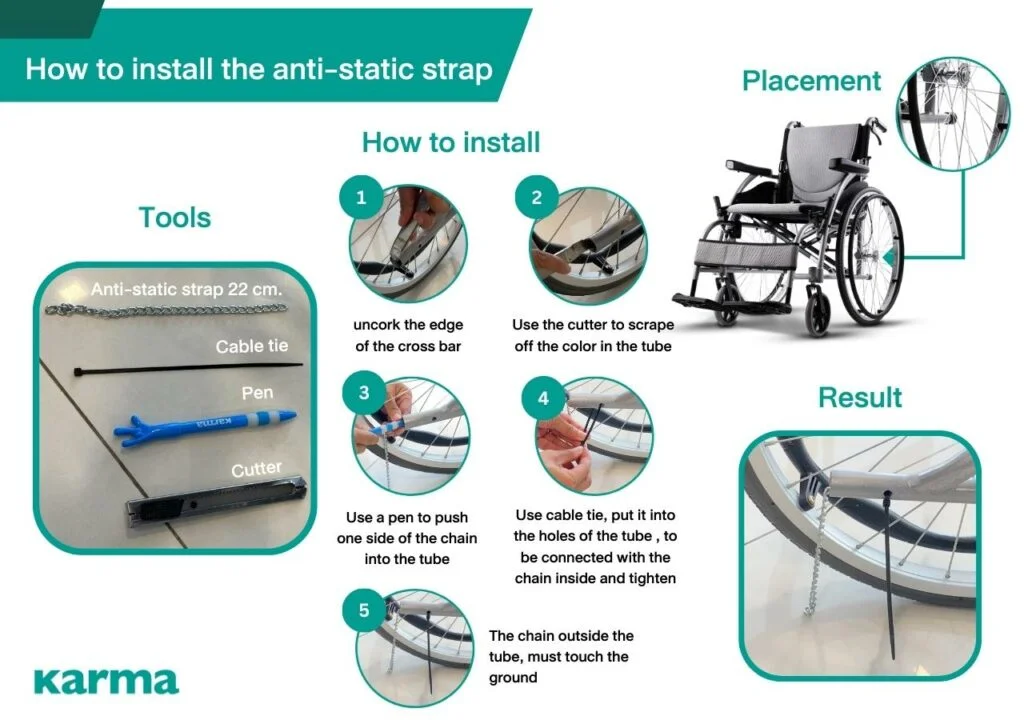Have you ever experienced a sudden shock when you touch a metal doorknob? This jolt is the electrostatic discharge between objects. There are many reasons for static electricity, such as dry and cold weather, air humidity, clothing materials, or people’s physique and dry skin, all of which can easily generate static electricity.
The main body of most wheelchairs is made of aluminum metal material. As a result of environmental conditions, the user or caregiver will inevitably build up static electricity when using it. The following are a few tips to prevent static electricity building up between the wheelchair and the user or caregiver:
-
Increase the humidity levels indoors. This makes it more difficult for static electricity to generate because there will be less friction. For example, in winter when weather is relatively dry, you can use a humidifier to increase the indoor air humidity.
-
Consider the material of the user’s clothes. Wearing cotton, silk, linen and other natural fibers can help prevent the buildup of static electricity. Top tip: avoid rubber soles (opt for leather shoes).
-
When touching a wheelchair, first touch with the palm or knuckles, because there are fewer nerve endings. If there is any static electricity, it will hurt less in these areas.
-
Try adding accessories that can help to prevent the accumulation of static electricity on a wheelchair. The wheelchair can be equipped with “anti-static strips” to dissipate any generated static electricity.
A final reminder; these small methods cannot 100% guarantee the removal of static electricity every time. The human body is always discharging electricity when touching objects, but it depends on the amount of electricity as to whether the human body can feel the electric shock.
We hope that these methods can help reduce the chance of feeling electric shocks and use wheelchairs more comfortably and confidently.


